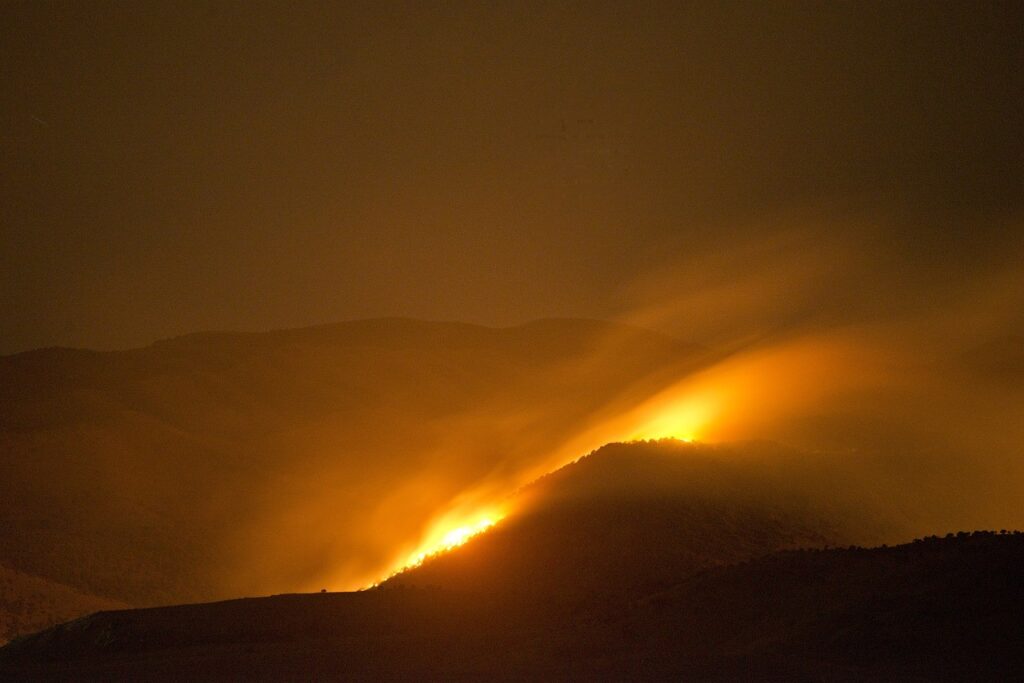To survive an entrapment during a wildfire, firefighters must be well prepared and know several survival techniques and strategies. Naturally, at ISK Fire Survival®, we believe our kit, which includes the FS1 fire lance, FS2 fire shelters, and FS4 fire skirt, is the best option.
Here are some of the options and tools available to improve the chances of survival during an entrapment:
- Emergency Fire Shelters: Emergency fire shelters are a last resort when there is no possibility of escape. They are lightweight, portable, heat-reflective structures that firefighters can deploy to provide a temporary barrier against radiant heat and flames. Training in the rapid and proper deployment of these shelters is crucial. Traditionally, individual fire shelters have been used, but due to tragic accidents, some countries have banned their use. Therefore, ISK Fire Survival® has developed the FS2 fire shelters. More information at: https://www.isk-fire.com/products/fs2-collective-shelter/
- Identification and use of safety zones: Safety zones are areas that offer natural or artificial protection against fire and its effects. These can include already burned areas, large rocks, bodies of water, or depressions in the terrain. Recognizing and moving toward a safety zone can be crucial for survival if escape is impossible.
- Self-protection: If a water supply is available, self-protection or curtain rods can be used. ISK Fire Survival® has patented a self-protection rod to prevent fire from approaching vehicles, as can be seen at https://www.isk-fire.com/products/fs1-integral-protection-rope/
- Improved decision-making and risk assessment: Training in decision-making under pressure, risk assessment, and knowledge of fire behavior are essential to prevent entrapment situations. Informed decisions help avoid dangerous situations and choose the best escape or protection options.
- Effective Communication: Maintaining clear and effective lines of communication with the team and command is crucial for coordinating movements, sharing information about fire behavior, and making collective decisions about the best course of action.
- Physical and Mental Training: Physical preparation helps firefighters withstand the physical demands of their jobs, while mental preparation improves resilience and the ability to perform under extreme stress.
- Advanced Equipment and Technology: The use of advanced technology, such as geographic information systems (GIS), GPS, and drones, can improve situational awareness, allowing firefighters and incident commanders to make more informed decisions about movement and equipment placement.
- Planned Escape Strategies: Pre-planning and identifying escape routes and safety zones are critical. Continuously assessing fire conditions and adapting escape plans as needed can be critical for safety.
- Ongoing Training: Regular training in survival, fire behavior, use of personal protective equipment, and safety tactics is vital to maintaining the skills needed to cope with and survive entrapment situations.
The key to surviving a wildfire entrapment lies in prevention, proper preparation, and the knowledge and effective use of survival techniques and tools.
